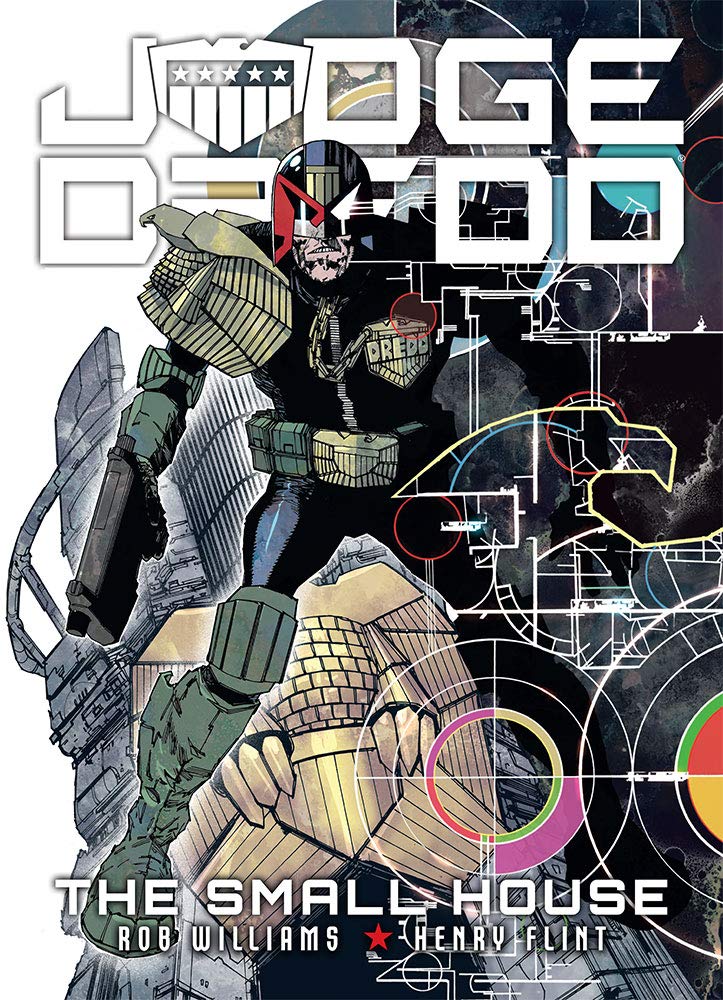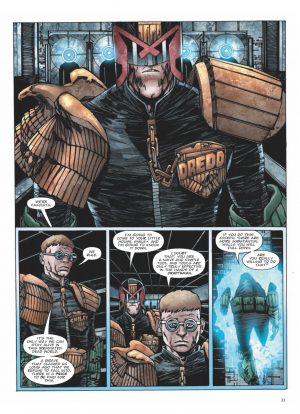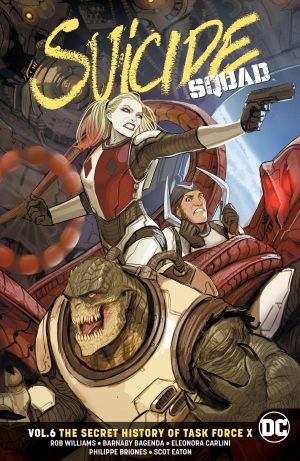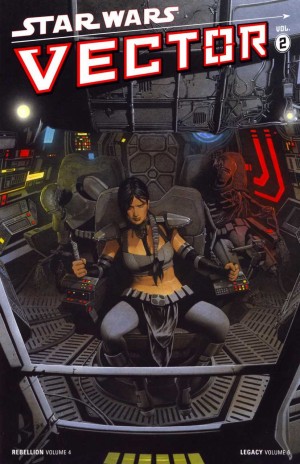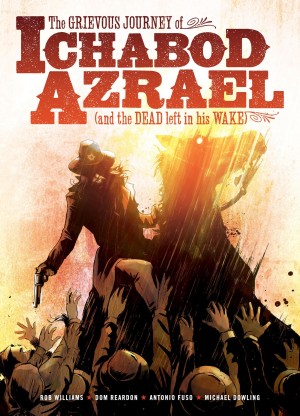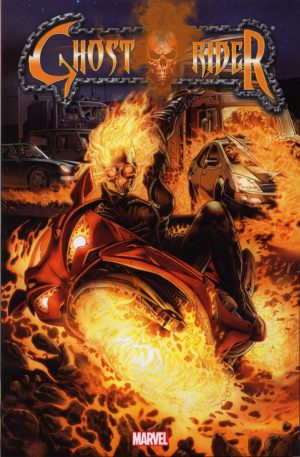Review by Karl Verhoven
There’s a thread running through Rob Williams’ Judge Dredd stories, the hint of something big, nasty and possibly corrupt. It started with the horrific events related in Titan, and The Small House begins with a survivor of that holocaust, an architect expedited to Judge status. That Judge Sam is an architect is important and clever, Williams making the point that he’s trained to recognise structure, which leads to a breakthrough, and the other meaning of his trade name is also well applied.
Previous Dredd graphic novels written by Williams haven’t always come together. It’s not that the ideas were absent, but they weren’t always articulated as well as they might have been, but The Small House is the breakthrough. It’s classic conspiracy, excellent Dredd and a collection to be enjoyed standing alone. And that’s before considering Henry Flint’s contribution. He fills those backgrounds, and has an innate sense for what plain works. His Dredd is classically craggy, his Dirty Frank appropriately wild and his Judge Smiley the smart combination of ordinary and sinister – very Alec McGuinness. It’s the goggles that do it. When Williams and Flint work in synthesis, the results are great, with Flint’s illustrations accompanying the captions on the first page of the title story first rate. Those captions strike the right mood as well: “There is a house, you know. A small house. And it has no doors. There is no way in and no way out. Yet someone lives there.”
Dredd’s problem is a cabal within the Judges who have access to alien technology enabling them to phase in and out of the regular world, walking through walls they enter and disappear through via electronic access gates created with that technology. They’ve carried out a series of assassinations designed to spread fear and confusion toward unknown political ends, and in a chilling sequence ending with the sample art there’s shocking disclosure of how some judges see themselves.
Having Sam as the narrative voice for most of the story is very effective. Not only do we come to know him, which is important, but he offers his thoughts on Dredd and his world, which can either be taken as those of Williams or not. Either way, they’re interesting, and Smiley’s unapologetic use of the term ‘fascist’ to describe the Judges and their system is stating explicitly what may have escaped notice among the adventures over the years. Smiley also offers his assessment of Dredd, and that could equally be Williams. Maybe they both are. Ultimately, that doesn’t matter because the clue’s with the villain that Williams and Flint are supplying a complex thriller with nods to John LeCarre. Visual clues and metaphors abound, and with a cracking pace The Small House demands a big payoff. It’s duly supplied with a terrific revelatory ending that reconfigures much about what the Judges are responsible for, Williams filtering speculations about our history to good effect. It’s his coming of age on Dredd.
A slim coda addresses a scab that might have been best left unpicked, and it’s going through the motions. It’s the only wrong foot in a phenomenal thriller that surely ranks near the top of any Dredd without John Wagner or Alan Grant’s involvement.
